Note: I do not have any intention to criticize anyone. The only aim is to pen down my thoughts and to find out from fellow value investors if I am missing anything.
First, a confession
Till recently my investments were generally restricted to special situations [open offers, buy backs & delisting] and out of favour stocks. After reading repeatedly posts by Prof Sanjay Bakshi, where he insists on investing in high quality and scalable businesses [read here and this article in outlook business], I got convinced about investing in highly scalable business and not restricting myself only to contrarian picks. The principles laid down in the book “Accounting for Value” suggested by the Prof will make sure that one does not pay exorbitant price for growth. So finally thanks to all my friends who have repeatedly tried to push me towards consistent wealth compounding machines, but I was a slow learner.
During the lecture by Mohnish Pabrai in MDI , there was an excellent question about “How to select stocks for analysis from more than 5000 listed companies in India” and Mohnish answer was
“become a shameless clone and look at the holdings of intelligent investor”
Then do your analysis. Invest only if, your are convinced and stocks lie in your circle of competence.
So to begin my journey in high quality stocks, I started with analyzing holdings of PPFAS Long Term Value Fund [ a fund sponsored by reputed value investor Parag Parikh and managed by Rajeev Thakkar]
About the company:
Mahindra Holidays & Resorts India Limited (‘Mahindra Holidays’ or ‘the Company’) is a leading player in the leisure hospitality industry. It has established vacation ownership in India, and is the market leader in the business. Mahindra Holidays offers members a choice of 44 resorts. 2/3rd of the inventory is owned by it and balanced is on long-term lease. ‘Club Mahindra’ is the Company’s flagship product in the business, which entitles a week’s holiday every year for 25 years.
Watch this video by Rajeev Thakkar [Starting at 30:00]
Read this article in Outlook Business
Analysis using mental models
To analyse the business model we will use certain mental models. To answer why use mental models, let me reproduce what Prof. Bakshi replied on his blog for one of my question.
“Mr. Munger’s mental model framework is not just some abstract idea with little practical utility. His models from psychology alone should be applied to every business an investor is contemplating buying into for the long-term, by asking critical questions……. Some of the answers to those questions come from economics but several will also come from psychology. As Mr. Munger says, you need a checklist. And then you need to relate to what you see out there in with world to that checklist by asking a lot of questions that begin with the words “why?” or “why not?” [Emphasis mine]
We will use following mental models :
Working against the business 1) Negative feedback loop 2) Thinking of business as an Ecosystem 3) Consequences of consequences…..4) Red Queen effect.
Watch this Video by Rajeev Thakkar to understand System Thinking and feedback loops [starting 4:00 to 12:00]
Working in favour of business: 1) Network Effect 2) Winners takes all 3) Social Proof
Reasons not to buy
Business model NOT a win win situation for everyone
Mohnish Pabrai, in his interview to Outlook Business, insisted that investors
“Should not look at business models in isolation — it has to be a win-win for the full Ecosystem.”
My limited analysis of the Mahindra Holidays suggests that customers are mostly the losers in the business model followed by Mahindra Holidays.
Let’s see how the required rooms are calculated for member base by the Company
Take time to read this comment by management in June 21012 quarterly conference call
Lets analyse the company’s reasoning
- 80% member addition through EMIs, so they will be eligible only after 12-15 months – This is a fair assumption.
- 50 weeks – Company is almost assuming that it will have 100% occupancy throughout the year [Even during 2013 its occupancy was only 90%]. No provision is made for rooms, which Company lets out for corporate events.
- Only 75% members will use – Does it mean 25% of the members will NEVER use the facility. Going by the above calculation, company ignores the fact that members who have not utilised in earlier years will use next year. So company is betting that 25% of members WILL NOT use their benefits EVERY YEAR, YEAR AFTER YEAR.
But going by current inventory of rooms and assuming the best case scenario that members will EVENLY OCCUPY the rooms throughout the year [i.e 100% occupancy], still only 75-80% of members can use their benefit. To correct this situation, company needs to drastically add rooms.
Have a look at international benchmarks
Historically company is consistently issuing far higher membership, compared to its inventory base.
So what the company has done to correct the shortage of rooms ?
1) Trying to restrict members from going to the same resort within 12 months [This restriction was there till a couple of months back, I think they recently removed this]
2) Mahindra holidays has purple season membership. Their highest paid membership, during which no other members can travel other than Purple season members. According to eNidhi India, Club Mahindra had increased the number of purple days during 2006 to 2013. Other members can book only 15 days in advance, by which time no rooms will be vacant. Read here
Wyndham [and many of the developed countries resorts] have point based system, with no restriction on use of unit size, season and no. of days. Mahindra club has restriction on season usage, unit size and minimum no. of days….
3) Marketing the product with corporates as ‘Club Mahindra Fundays’
[Extract from company annual report 2013]
While Mahindra Holidays do not have enough rooms for its existing members, its marketing the resort with corporates. As per one of my friend, company rented out majority of its units in Coorg resort for full weekend [Friday to Sunday] in the month of January 2014 to one of the big four auditing and consulting firm of India. Now no where management is factoring this, while calculating the number of required rooms.
Run baby run, says the red queen, or you will go nowhere
In the post on Red Queen effect, Prof Sanjay Bakshi talks about Red Queen
Red Queen is a fictional character in Lewis Carroll’s “Through the Looking Glass”. In a famous scene the Red Queen seizes Alice by the hand and drags her, faster and faster, on a frenzied run through the countryside, but no matter how fast they run, they always stay in the same place. Alice, who is understandably puzzled, says
“Well in our country you’d generally get to somewhere else – if you ran very fast for a long time as we’ve been doing.” “A slow sort of country!” says the Queen. “Now, here, you see, it takes all the running you can do, to keep in the same place. If you want to get somewhere else, you must run at least twice as fast as that!”
[Above two para’s are extract from Prof. Sanjay Bakshi blog]
I think Mahindra holidays is also in the same situation where, just to keep up its existing Operating Cash Flows [OCF], it needs to keep on adding new members. As discussed above, to improve members satisfaction and to match with international benchmarks Mahindra Holidays needs to increase drastically number of rooms. But if it does not increase its member base continuously its OCF will crash.
In the same post on a question about how to analyse Sanghvi Movers which had never generated any positive FCF, Prof said
“How much cash flow will they generate if they stop buying cranes? If they stop growing, how much will be the earnings that can be taken out without feeling the need to put them back in the business?” [Emphasis mine]
Lets analyse Mahindra Holidays operating cash flow and how much cash will they generate if they stop adding new members. Before that, take time to read company’s revenue recognition policy. This helps to understand why I am focussing on Operating Cash Flow [OCF] and ignoring accounting numbers altogether.
[INR Amount in crores, unless otherwise stated]
Its clear from above table that majority of OCF is through addition of new members and if they stop adding new members COMPANY CANNOT MAINTAIN ITS EXISTING OCF. Without addition of new members, INCREMENTAL OCF might be DRASTICALLY LOWER THAN CURRENT OCF.
Lets see the impact of slow down in the growth new members on Cash Return on Gross Investment [CROGI] and what will be the impact if new members addition stop altogether [I am not suggesting new member addition will stop, but as suggested by Prof Sanjay Bakshi in Sanghvi Movers case, trying to assess the impact if company stop growing]
Note: CROGI is a good tool to remove the impact of accounting policy of deferring part of the revenue over 25 years by the company. To know more about CROGI read here. I have not capitalized the operating leases in the above calculation. Company’s policy is to maintain 30% room inventory on lease basis. To remove the differences from decision arising from buy vs lease, one needs to capitalized the operating leases. If I do that, CROGI will decline further.
Pre-tax ROE numbers are very attractive. Let’s understand the reason for attractive ROE. It’s not driven by business fundamentals, but accounting choice. Company has shown deferred income under other liabilities. According to accounting principles the above treatment is right. But lets ignore the accounting treatment. As far as shareholders are concerned, the above cash is already received by the company and the company had utilized the above cash to acquire or build new resorts. Income from new resorts is reflected in the P&L statement, but corresponding amount is not being reflected in the balance sheet, which boosts the ROE. So, better to concentrate on cash returns measures like CROGI rather than accounting measure like ROE.
Read the below extract from book “Accounting for Value” to understand why book rate of return like ROE should NOT be blindly relied upon.
See the below slide on why even the REMOTE LOSS SCENARIOS [like NO GROWTH IN MEMBERSHIP] should be analysed before accepting any RISK.
Food within resort is exorbitantly priced:
Taking advantage of its remote location, company is charging quite steep charges for food. In Munnar, for a family of 3, lunch costs INR 2,400 per family per meal. But the consequences of consequences will be, sooner people will find alternatives. Eg. In Munnar, nearby 2-3 small restaurants have opened to cater to these resorts members.
According to some old members they used to have full kitchen till a few years back but now the same is replaced with Microwave. Wyndham [biggest vacation ownership company in the world] provides the full kitchen in the rooms along with washer and dryer.]
Management during its interview to eNIDHI in 2008 said: “Our fun dining program which is a member privilege provides for Rs. 450 per person, breakfast+lunch+dinner on an elaborate buffet. This buffet is comparable to any 5 star offering. I am sure you will appreciate that the price being charged is less than what many 5 Stars charge for ONE buffet meal let alone three. ” – But it seems to be discontinued.
High food prices might be the reason that there average revenue per member had remained around INR 4,000 to 5,000 [assuming 75% members availed holidays] during the last three years.
Negative feedback loop
74% of people have given ‘One star’ rating to Club Mahindra on Mouthshut.com
Have a look at the results of survey by Moneylife [based on 450 responses. As Mahindra Holidays’ market share is close to 50%, it might be reasonable to consider this survey as proxy for Mahindra Holiday membership]. You can read the full article here
Read this excellent article by Shrinidhi Hande on his blog, take time to read readers comments in detail.
Other negatives [though not material]
Debt understated
ICRA in its discussion paper on covering accounting perspective of securitization recommended adding back securitized assets with recourse.
Debtors outstanding for more than six months is increasing continuously
The above could be because of increased addition of members through EMI scheme or delay by customers in making payment on time.
Reasons to buy
Huge opportunity ahead
According to industry estimates, the market has grown at 18 per cent in the last five years. Even so, India has only 350,000 vacation ownership households. If one were to look at the 11.5 million households who own a car as a proxy for the addressable market, only one in thirty-three car owners has a timeshare membership. This means that the current market penetration of vacation ownership products is very low and that there is considerable headroom for future growth of the business in India [Source: Company AR 2013]
Source: Outlook Business magazine
Better business model compared to hotels
Pan India presence and dominant market share [~ 50%]
Conclusion
Based on the above discussion, I think that the Mahindra Holidays business model is not a win- win situation for everyone. Large part of customers will continue to be dis-satisfied due to non-availability of sufficient rooms. Negative feedback loop will reach a critical point sometime and then business might become unsustainable due to bad reputation.
New member addition is the driving factor for majority of the profits, OCF and CROIG. So, the company needs to run faster and faster to stay in the same place. To move ahead, it needs to run at double the speed [add double the number of existing members] and if it does that without increasing current number of rooms drastically, customer dis-satisfaction will increase more. So Mahindra Holidays is in a Catch-22 situation.
Disclaimer
- All the posts on this blog, including this one, are for educational and discussion purposes only.
- None of the material posted should be regarded as advice to buy/sell any stock. I do not have any proven stock performance record to talk about.
- As a professional investor, I may have positions in stocks discussed.
- Main aim is to seek contra views and not to recommend any particular stock as buy or sell.









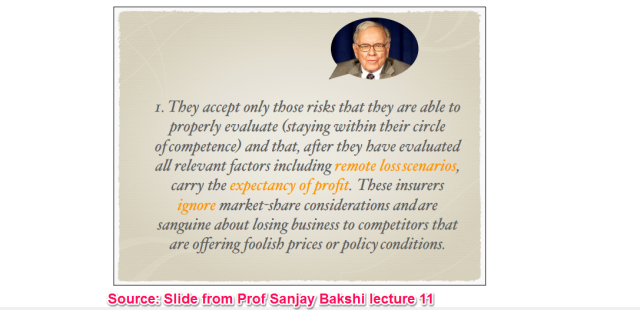
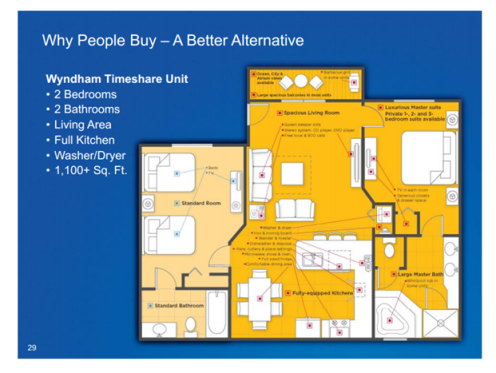
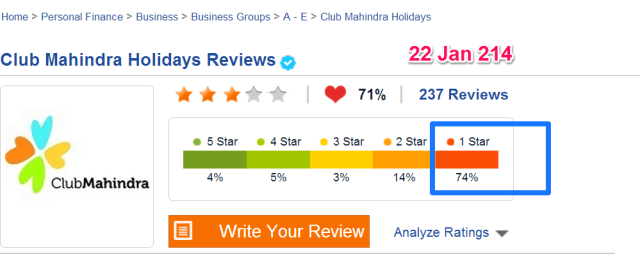





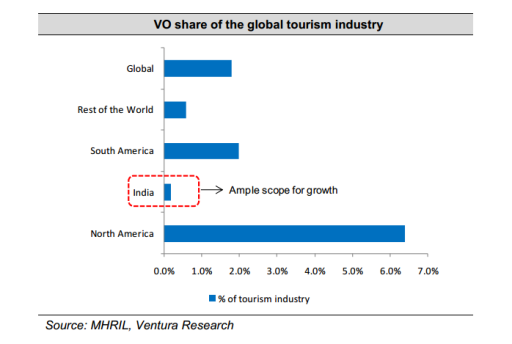
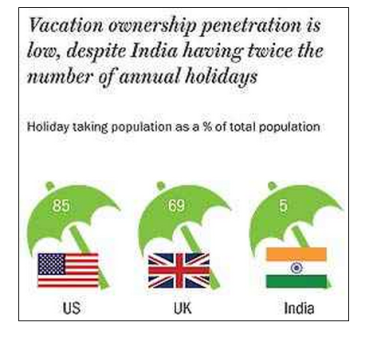

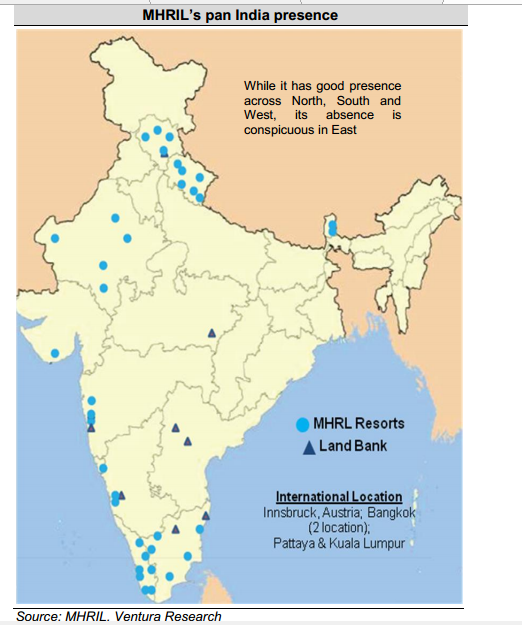
Anil, this was a good analysis.
You are seeking contrarian opinion for what is essentially a contrarian view 🙂 Note that quite a few celebrated investors are invested in the timeshare industry.
Sterling Resorts essentially created and expanded the timeshare market, then went almost bust and in the process, killed the golden goose. It was only because a respected player like Mahindra came in that the industry has again got some level of respectability.
You support your conclusions with data. Moreover, some of the red signals (like customer dissatisfaction and overbooking of rooms) have been visible for many years for this industry. I am surprised that even a reputed group like Mahindra is not able to change the ways of the industry. Have you analysed why this is so?
LikeLike
Thanks Nasir
It am not sure why Mahindra is operating in this way. I think there is fundamental problem in the business model itself. Mahindra and other players need to design the business in a way that its self sustainable. Currently Mahindra business is dependent on addition of new members. If in a particular year, additions completely collapse, it may struggle to meet its operating expenses itself.
LikeLike
I. From what I could see, the problem with the business model could be:
(1) mis-selling and over-booking of time-share (making promises which cannot be met)
(2) under-charging (they have fixed revenues from a customer as sales are made upfront, but their operating costs are in future – uncertain, unknown, but surely impacted by inflation… the only fixed costs may be depreciation on properties developed)
Do you have any other insights on the business model?
II. Their accounting policy for revenue recognition is hugely flawed.
(a) Why are admission fees recognized upfront? Bifurcation between admission fee and entitlement fee is converting a legal term into an accounting jugglery when the business reality is quite different. Are the costs incurred for admission as % of Revenues equivalent to the costs incurred for entitlement as % of Revenues? Or even the efforts?
(b) Why is the revenue for entitlement fee recognized as income in equal proportion for each year? This doesn’t recognize the time value of money for the revenue. Heck, it doesn’t even recognize the impact of inflation and other variables for the costs and hence, front-loads profits (higher in initial years).
LikeLike
Thanks for Sharing your view Nasir. You are spot on regarding their accounting policy. Yes its true their despite the fundamental accounting principle which prescribes that priority should be given to substance over form, they have given priority to legal form.
Recognition of admission fee upfront inflates their revenues and profits and the result is that our poor sell side analyst who cannot look beyond reported numbers, then start blindly applying PE multiples over reported profits. Wyndham [largest vacation ownership company in the world] recognizes its income from sale of time share on a straight line basis. What you are suggesting is definitely a better method, but it becomes little subjective.
Regarding business model, they are charging annual maintenance fees which is linked with inflation. So it enables them to meet part of their operating cost. They incur almost 30-35% expenses in acquiring a customer. I have not done any detailed calculation, but I have a feeling that net of marketing fees, their IRR will be quite low if they restrict number of members to around international benchmark of around 40-45 members per room. This is the reason they are forced to increase number of members to more than 60-70 members per room.
Thanks
LikeLike
Wyndham’s accounting policy is based on a business model which is different than Mahindra Holidays.
As per Wyndham’s 10K Page 80, Deferred Income, Wyndham’s advance from customers are for a maximum period of 3 years, which is a much shorter period than Mahindra Holidays’.
Also, total deferred income is $ 590 million against total revenues of $ 4534 million (just 13%). Further, deferred income may not fluctuate much year on year. For these reasons, in any one year, the impact of accounting on a straight line basis is likely to be not significant.
LikeLike
(1) They spend 30-35% on acquiring a customer? That high?
(2) In an interview, Mahindra Holidays managing director Ramesh Ramanathan said, “more than 25% of our new members sign up through referrals by existing members.”
If both (1) and (2) above are true, they spend 30-35% in order to acquire 75% of customers? (since 25% sign in through referrals). Isn’t that very high? Something doesn’t seem correct in these facts/assumptions.
LikeLike
From Mahindra Holidays Sept 2013 quarter conference call : The percentage of sales and marketing expense as a percentage is about 28.5% that is what it would include, out of which the major chunk there would be two major chunks one is what we call as a sales variable cost including the sales variable cost would primarily include commission incentives to sales people and the offer cost and the other one would be your sale fixed cost these are the two major components. Sales fixed cost would primarily include the holiday world rent and service charges that’s it. So, these are the two primary components which is 28.5% of sales. [page no. 11 of 19]
And for Wyndham its more than 40% for 2011
LikeLike
Thanks for pulling out these numbers, Anil.
If they have to spend 30% to earn 75% of customers, and assuming an equal spread of revenues across customers, the customer acquisition cost is 40% of Revenues for Mahindra Holiday. Is this only considering Revenues for the first year or for the entire period of customer acquisition?
LikeLike
Note:1) Fixed employee cost of marketing department: I think this is not included above. Because Schedule VI this needs to be shown under employee cost.
2) Rental cost of marketing offices: Not sure whether above expenditure is inclucing rental cost.
LikeLike
Thanks Anil.
Seems like a faulty business model if they have to pay so much for marketing!
Also, see that most of their revenues are tied up in receivables – and they even have receivables securitised (off the books). Isn’t the company collecting money in advance? Do you know what these receivables are for?
P.S. Somehow, I cannot reply to your post, seems only 4 replies are allowed; then one has to create a new reply.
LikeLike
These receivables are for membership which were sold on EMI basis….
LikeLike
EMIs are for advance membership fees?
Trying to understand the accounting:
Debit Receivables
Credit what?
LikeLike
Revenue and deferred revenue – proportionate amount depending on time and other factors [proportionate amount will depend upon their accounting policy. They do not allow customers to use holidays till a threshold amount is paid. Not sure whether any different treatment is accorded for customers who paid upfront and who pays in installments…]
LikeLike
Credit to Revenue – I thought they collected in advance, so that is the confusing part. They would not allow customers to use holidays before a threshold amount is paid, but still recognize the revenues?
LikeLike
then show amount as outstanding!
LikeLike
I think Debit Receivables, Credit Deferred Revenues doesn’t make sense as it is just inflating two sides of the balance sheet.
Usually, one would debit Receivables when credit is to Revenues (P&L) and one would credit Deferred Revenues when debit is to Revenues (P&L). I cannot visualise both debit and credit to the balance sheet for the same customer under the same contract without netting off the amounts.
LikeLike
According to them it is self sustained business model (member pays to build resort) , but even after 281 Cr (176 +105) IPO+ QIBs money, enough to build 600 rooms or 30k member’ room or 2 years’ room in advance, they are still in backlog /sort of rooms!
What if part or full of debtors outstanding for more than six months goes bad. It may have already .. but not accounted for. What will be it’ impact on profit? They are dressing their profit here also.
LikeLike
If CM stop selling membership .. this is how their P&L will look like..
LikeLike
Interesting article in Business today highlighting reasons why Sterling Holidays collapsed during 1996-2006. Some extracts:
1) But in 1996, the market began to tank. India saw an explosion in the demand for white goods, triggered by the entry of multinational manufacturers. People chose white goods over future holidays. Competition also increased when the Mahindra Group entered the timeshare business with the launch of Club Mahindra. “In just 18 months, our timeshare sales dropped from 4,500 per month to just 200,” says R. Mohan, Sterling’s Senior Vice President – Finance. His company’s cash flow collapsed. [This is a possibility with Mahindra Holidays too, if new member additions collapse just like in sterling case [See operating cash flow table under “Run Baby Run section, it shows cash flow of Mahindra Holidays will collapse if new member addition stops]
2) “The revival at Sterling is interesting,” says Kaushik Vardharajan, Managing Director at HVS South Asia, a hotel consultancy company. “But they need to keep the member-to-room ratio at a level that will offer customers the flexibility to choose their holiday destination. To keep customer satisfaction levels high, Sterling needs to keep adding more resorts, and preferably lease them.”
LikeLike
How is it different from an IT services company where to grow they need to increase headcount or from a manufacturing company which to increase production has to increase capacity ?
Is this not true for any other business, if the end users stops purchasing or using its service the cashflows of the company will collapse ?
LikeLike
Mahindra Holidays receives its membership either in advance or within 2-3 years of anyone taking membership. After this for next 25 years, company receives only annual maintenance charges and is obliged to provide free accommodation to its customers. Look at the table again carefully which I have given under “Red Queen” section. The moment they stop adding members, their cash flow will collapse completely. Ofcourse for next 2-3 years they might continue to receive the pending EMIs, but what happens after that. As per my calculation, whatever proceeds they get from existing members, they cannot meet their operating expenditure [excluding advertisement]. But an IT company, even if stop adding new employees, will continue to maintain its existing cash flows. Cash flows will not collapse by 60-70%, which is the case with Mahindra Holidays….
LikeLike
I agree with Anil. I think what he is saying is that without adding new customers, this company will not be viable. A manufacturing or IT company may be able to survive with its existing customers and without adding any new customers.
Also, there is a different business model here, so one must consider that the cash inflows are received mostly in the first few years, whereas the outflows are spread over 25 years. So, the company can appear to be cash flow positive in the first few years.
LikeLike
Agreed, so what the manager does with the Float generated from new members will be very important. That’s why I think Sterling Holiday under Thomas Cook might be a better deal than Mahindra Holidays.
LikeLike
Yes most probably… I would like to believe that Mr. Prem Watsa will not venture into an asset heavy businesses. But is it possible to run Vacation ownership business on leased properties? To be very frank I do not have an answer. Thomas cook is becoming more and more complex [ or say interesting…]to analyse and understand for me….
LikeLike
Interesting development, Prem Vatsa finds value in Sterling Holiday ? May be due to land bank?
LikeLike
Sterling Holiday has lost trust, they need to re brand / rename this company. Vatsa would be involved at this level? They would primarily have found business value, rather asset alone.
LikeLike
Hi,
Do you think Piramal is now an unwannabe partner ??
LikeLike
Not clear ?
LikeLike
I mean after delisting for piramal glass, do u think he will replicate this with PEL ?
LikeLike
I don’t think so…Pirmal glass floor price announced is quite fair. So even if it happens, one can expect fair value….
LikeLike
Hi Anil,
drifted from Prof. Bakshi’s blog to yours. liked you analysis 🙂 you have taken good care of accounting treatments. It looks like Sterling now would be the nemesis of CM. Their spending 30 to 40% or revenues (bloated due to upfronting) on marketing is not sustainable for industry in long term. They have distribute LCD TVs with membership, now it might not work.
In notes to accounts (somewhere within No.25 to No. 29), I think they are reducing profits from securitisation by 30 to 40% after securitization of receivables each year. The tenure of the receivables securitised is not given. But seeing that the interest is about 30% of principal, at 12% interest rate it works out to 2.5 years. Since, the receivables are EMI, they should be fixed every month for the sold contracts. It implies that 30 to 40% contracts are being cancelled in 5 years. that is, 6-8% contracts being cancelled every year.
Could you have a look and share your thoughts.
Also, if the model is so good – taking money from customers and using it to make/buy properties making business capital free and charging for use of the properties – it is an arbitrage business! Sterling would not have any problems in getting customers given poor customer service of CM, what does it say about the future of sterling/TC? Just thinking…
LikeLike
also, if cancellation rates are 6% per year for a 25 year contract, then the company has become a ponzi scheme from a timeshare enterprise. If true, then this would be the classic case of lack of customer focus biting hard in the long term.
LikeLike
Thanks Pranav
I will come back to you on sterling. I don’t like the time share business model, as it is being practiced both by sterling and Mahindra.
To be very frank, I am confused why Prem Watsa acquired Sterling. Unless TC makes it clear, what’s their strategy on Sterling, it will be too pre-mature to comment anything. Its quite possible that we may be missing something which investors like PPFAS [holds stake in Mahindra holidays] and Rakesh Jhunjhunwala is able to appreciate. One of the reader pointed out that if the business model is so flawed Mahindra Holidays would have been out of business by now and sterling would not have got second life. Sector perse has got huge huge market, only thing required is to packaging the product appropriately…
LikeLike
Hi,
A very good analysis has been put by you…….regarding synergy between TC/IKYA/Sterling please refer this link http://business.outlookindia.com/article_v3.aspx?artid=289664
LikeLike
Hi Anil,
I hate hotel business. It is cash cow for hotel management companies and not for investors. But I am looking at timeshare business for the first time and this business looks a little different. Given that there is demand for CM says how much margin for error is there for the companies in this business. I think that the key would be to keep customer acquisition costs low. Why I say that is because:
A customer pays Rs. 5000 pm for 15 months and then can use his timeshare. That is Rs. 75,000. There are about 65 customers per room. That is CM gets about Rs. 50 lacs before it has to make a room for customers. The cost of that room would not be more than Rs. 50 lacs. CM securitises receivables, so they would get the money the day customer signs a contract. So, any capital is not needed to be invested by CM. And they charge about Rs. 60000 for 7 nights from customers as maintenance fees, that is Rs. 9000 per night. This rate is higher than that of a hotel that uses its own capital to make rooms.
This margin has resulted in CM giving LCD TVs of, say Rs. 30000, as joining gift to members. This is 40% of the first 15 months emi, or cost of the construction of the room. Then add huge advertisement expenses. Even after that they had big profit margins.
Am I wrong in thinking that this is a business with good margin for error and also latent demand? Wish I could take out more time and see why Sterling failed and how does its financials look like.
LikeLike
Thanks Pranav
You are spot on acquisition cost. Last night even I was thinking on the same lines. My WILD GUESS is that the first thing Thomas Cook [TC] is going to do is to reduce acquisition cost. They already have a wide network through TC and I think same can be leveraged for acquiring customers. Moreover, I think it should be a PULL MODEL rather than PUSH MODEL. Even the maintenance and other cost can be reduced through outsourcing to IKYA. All these are my WILD THOUGHTS and I may be completely wrong…
BTW on Sterling Resorts failure, I had shared a link earlier on the blog, here is the link again..
LikeLike
I am not sure from where you got this 60k maintenance fees figure. it is about 11k.
30-35 % sales and marketing cost is out of total revenue, if you proportionate it for only membership sale part of revenue same will reach to 55-60% .
LikeLike
Thanks!
I assumed that that the per month payment is constant throughout. Now it makes sense and timeshare looks like a business and not an arbitrage. Now it looks like if CM tries to increase the room/member ratio by 25%, then the money already spent on customer acquisition will hit them hard.
LikeLike
Gosh! just saw that membership fee is 2 lacs to 4 lacs for a room and not 60k that I thought. Investing is for those who can dedicate their time to it.
LikeLike
Excellent Anaysis; I am still trying to under stand the whole concept; Still some of the positives like low debt( big positive for asset rich company), Annuity of Rs. 170 crore; If new membership stops, it appears that OCF will become almost zero but will not become negative which is the case in other hotel companies; Brand value is still very high in-spite of the bad feedback( lot of positive feedback is also there); do offer some hope for the company. Anyhow excellent read; Gained a lot.
LikeLike
anil only a small point if they stop selling the entire customer acq cost(we need to make an assumption what proportion of the 27%) would reduce dramatically. So my sense is OCF would not drop as dramatically as you made out in the sheet. That said I think as mentioned India is a growth market and so they think adding new customers is better use of cash then collecting OCF stop adding rooms and resorts.
LikeLike
Pingback: Sterling Holidays Business Model | cb